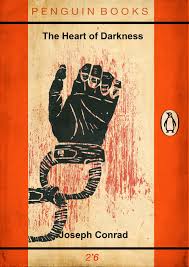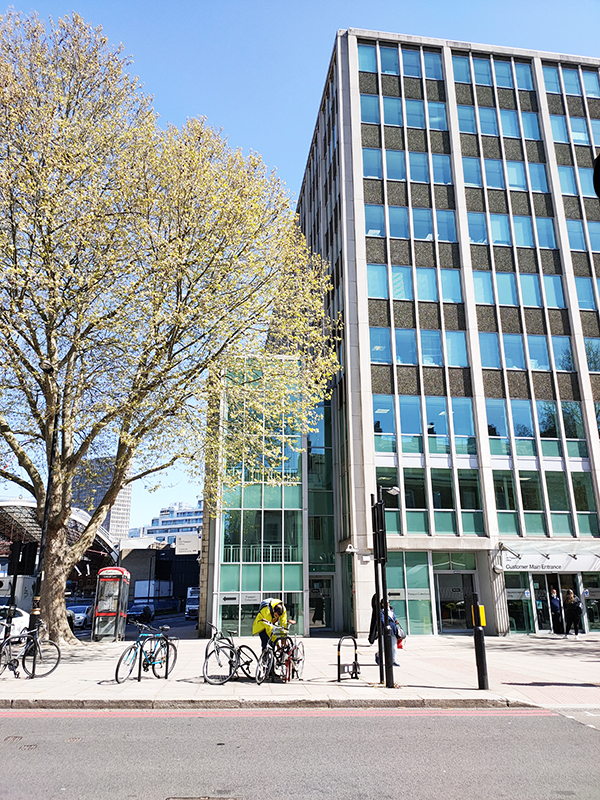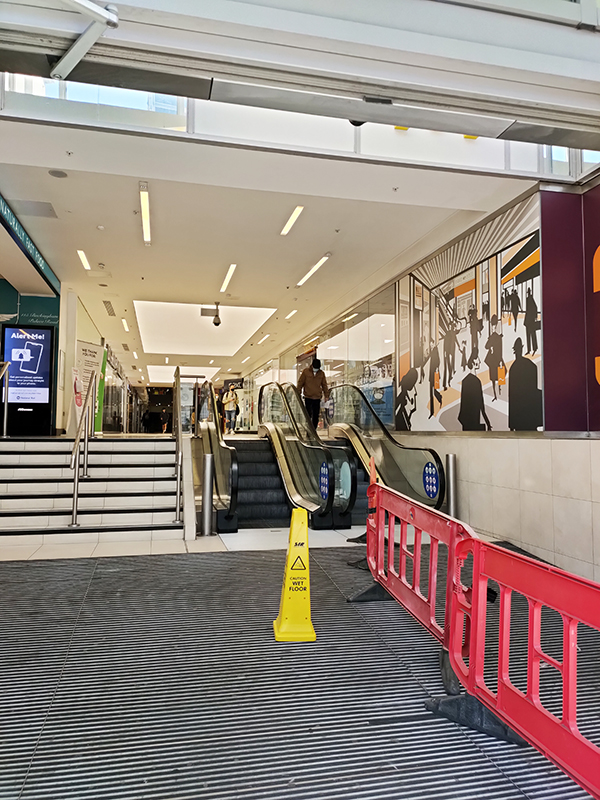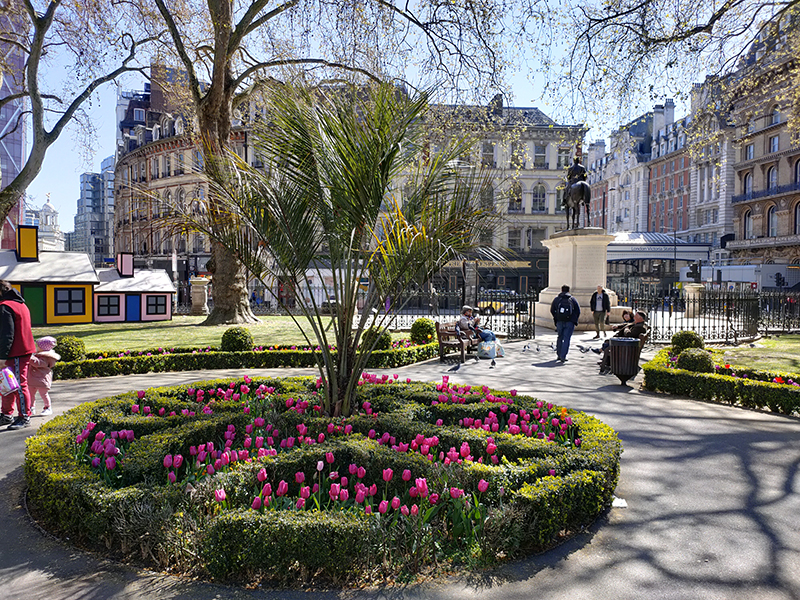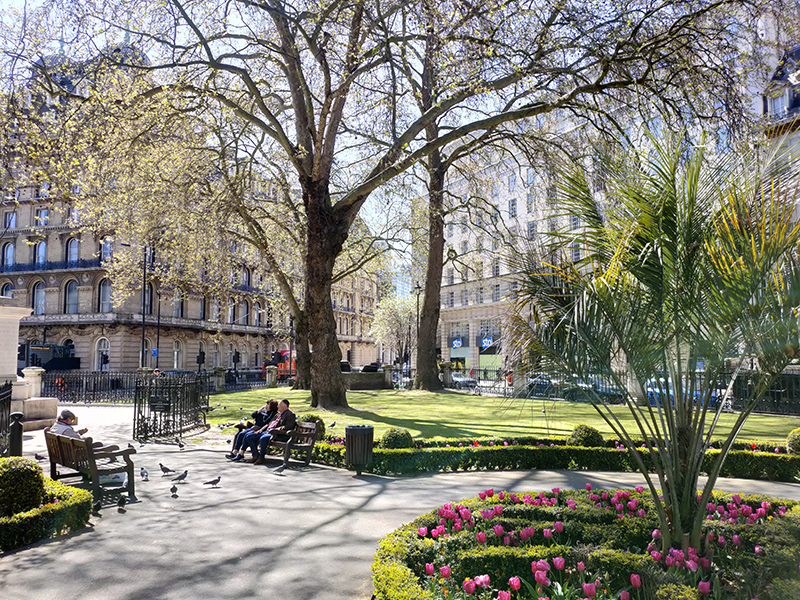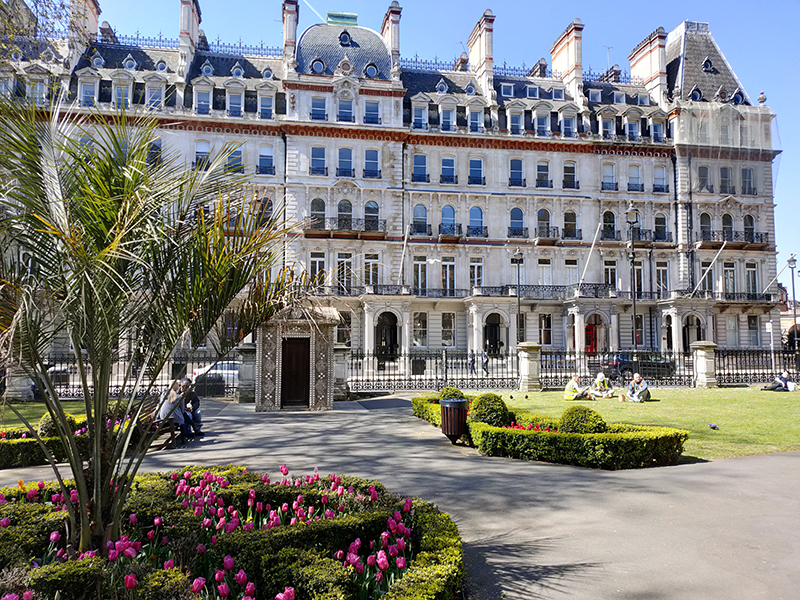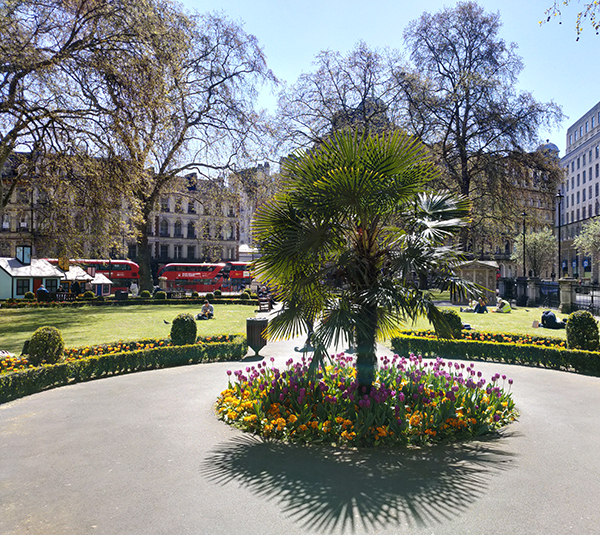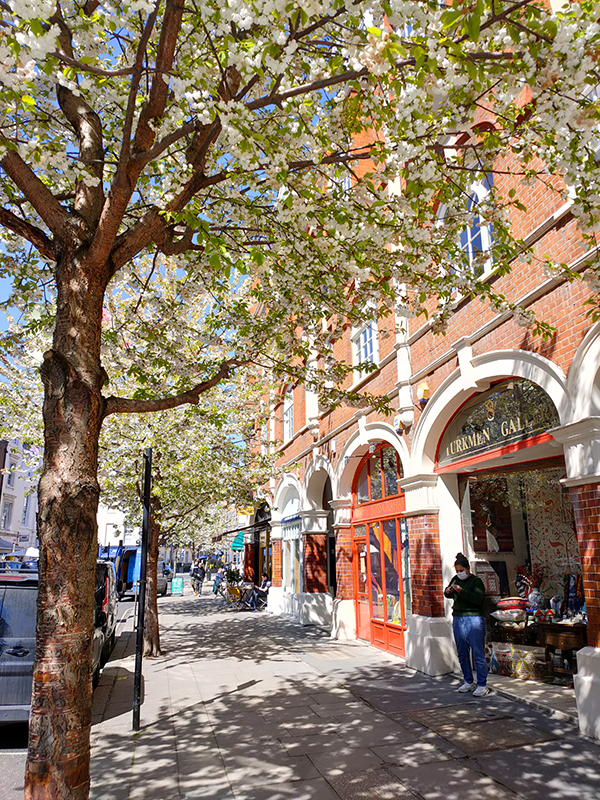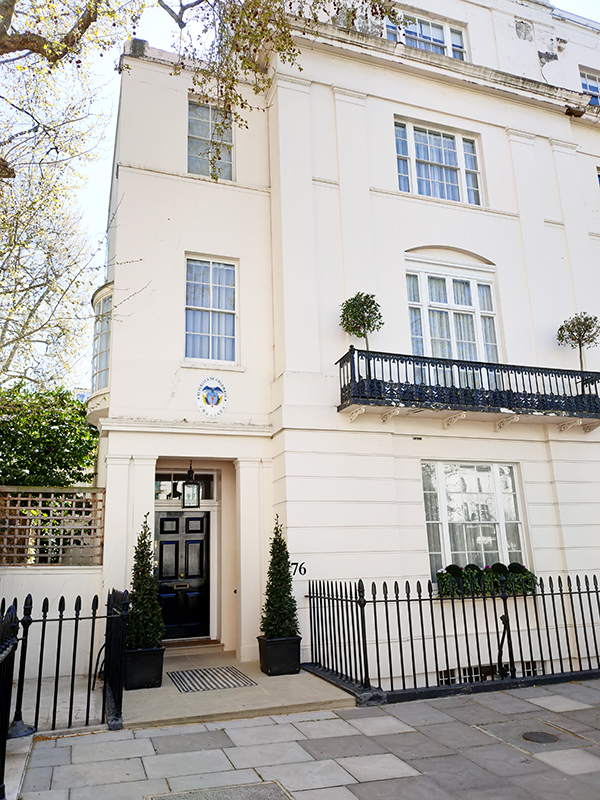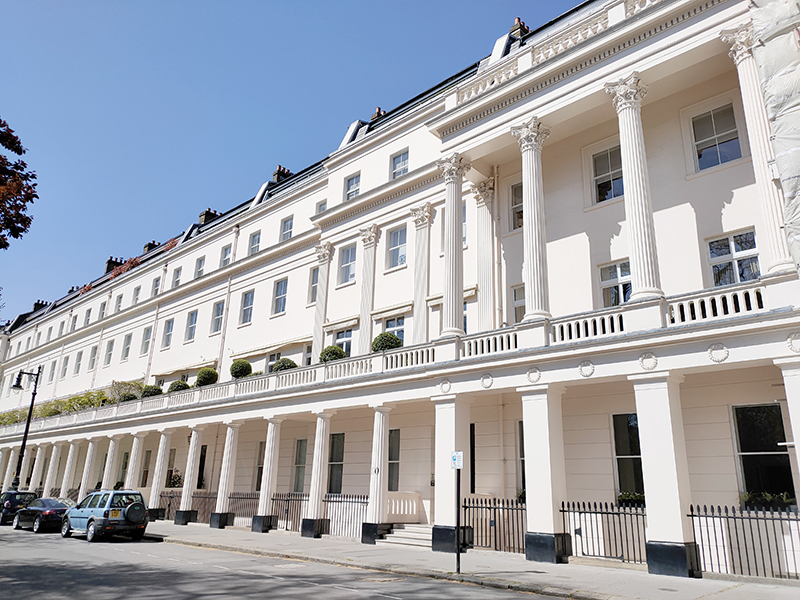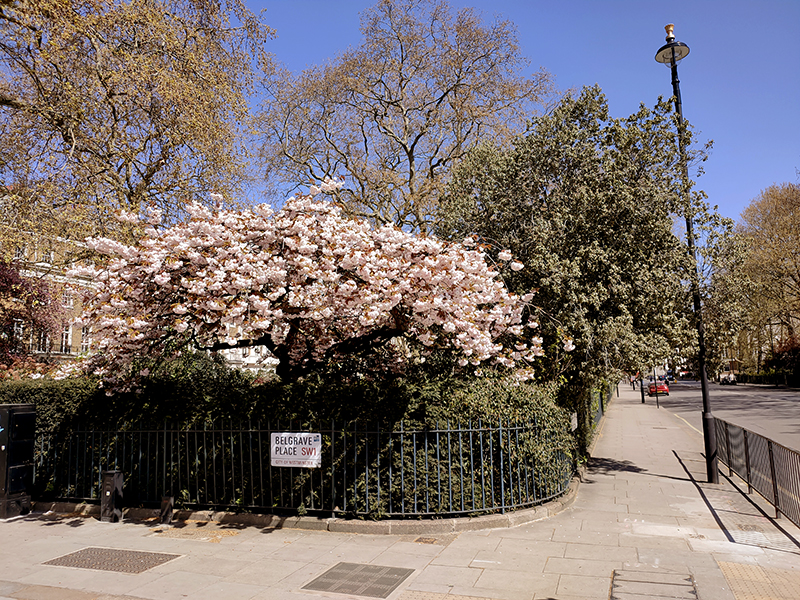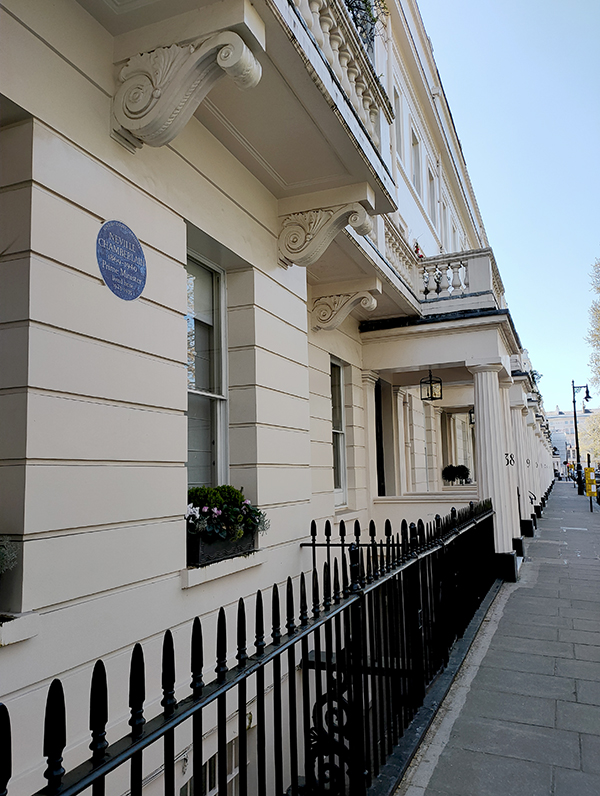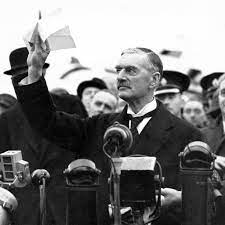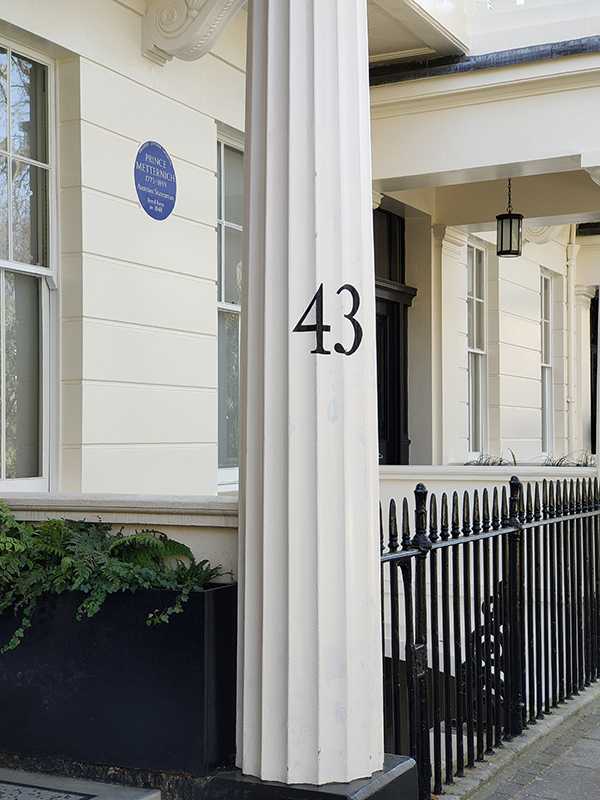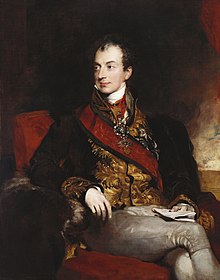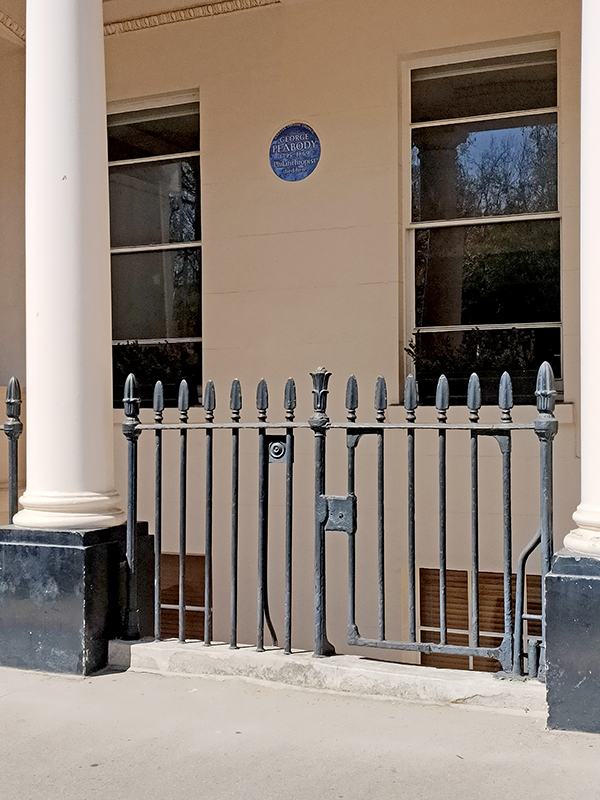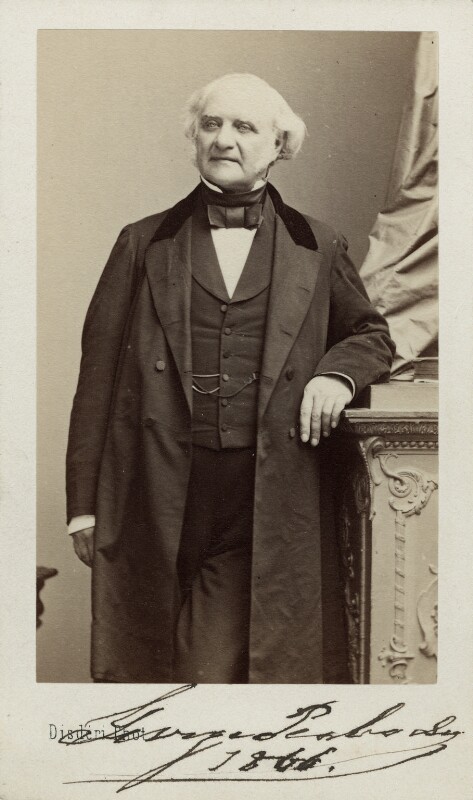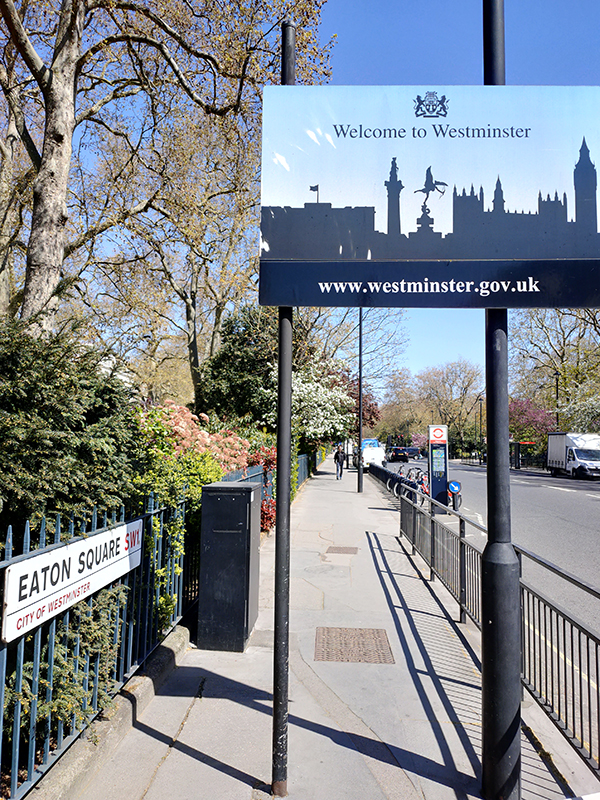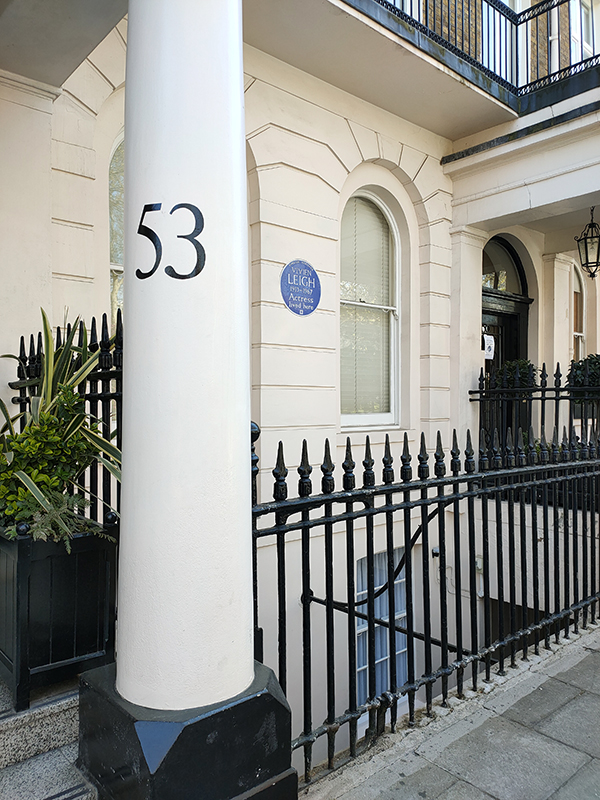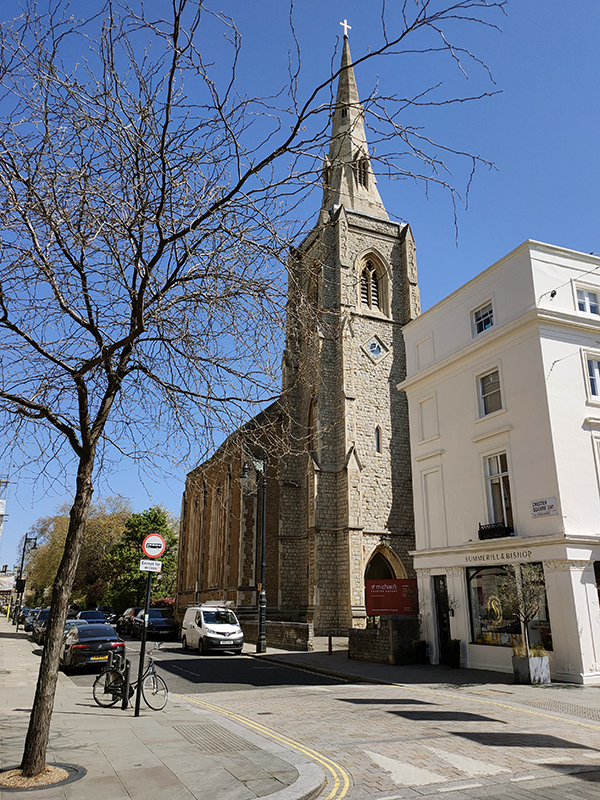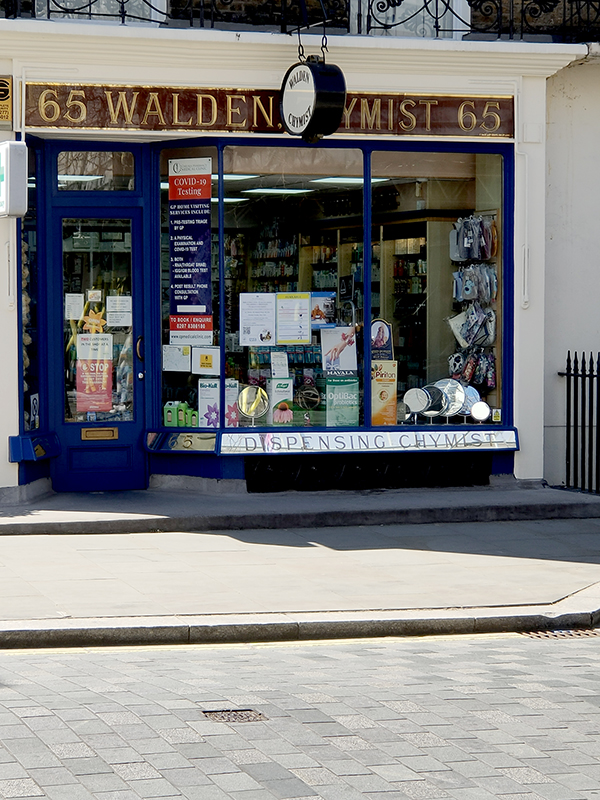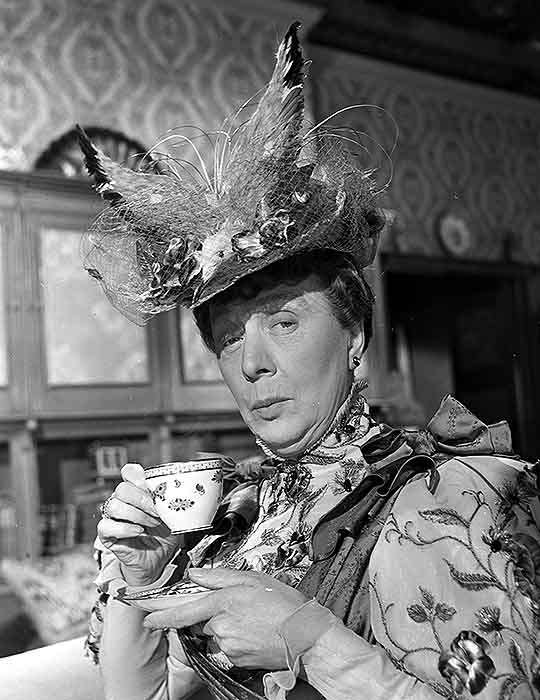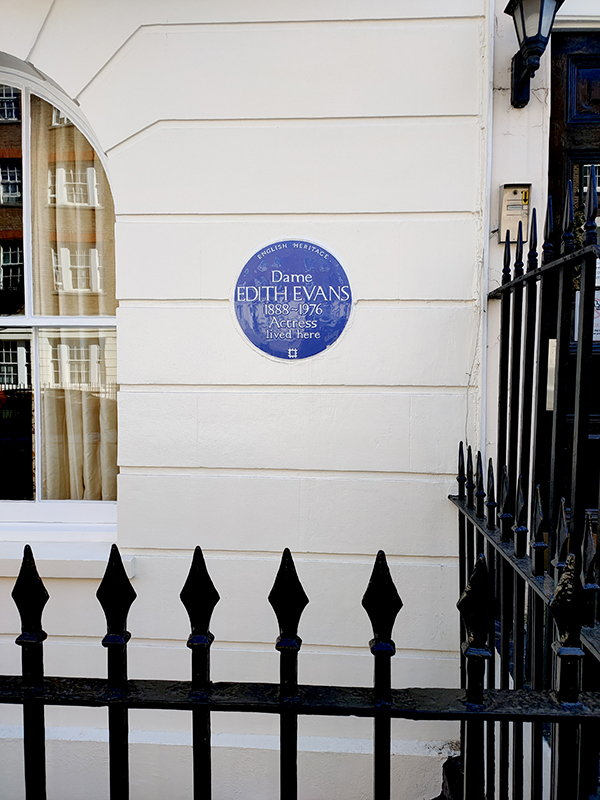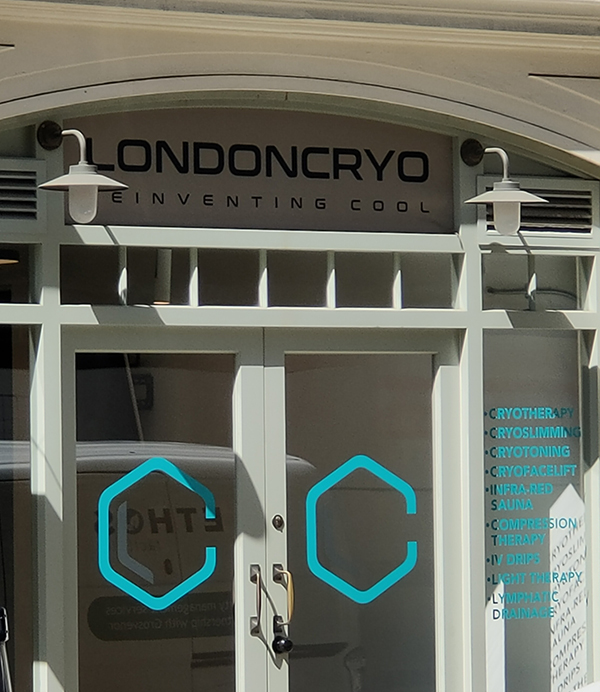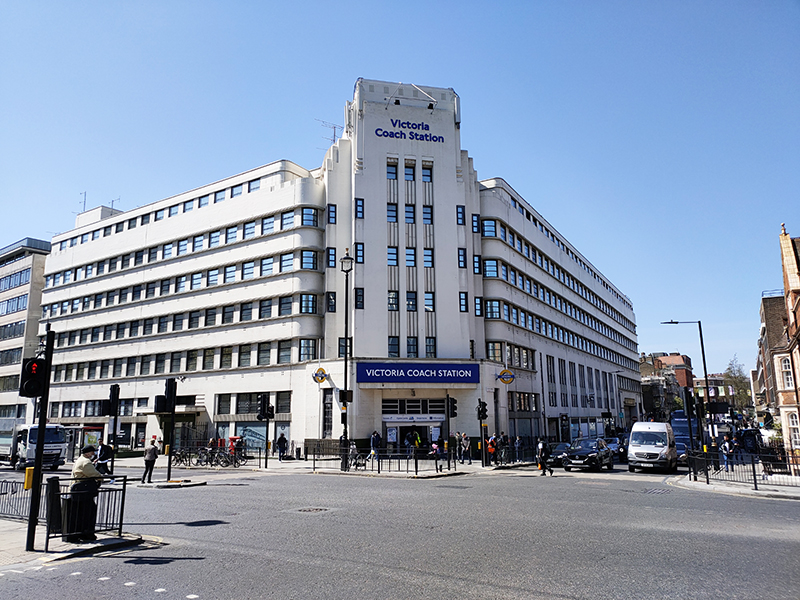Back again at long last then. For this resumption we’re exploring the (extremely) upmarket and pretty verdant nexus of Belgravia and Pimlico. There are quite a few interesting former residents to check out and plenty of colourful springtime flora to brighten the route.

Starting point today is Victoria Railway Station from where we head south down Wilton Road. Turning left into Gillingham Street we encounter the first of today’s many blue plaques at no. 17, commemorating the writer Joseph Conrad (1857 – 1924). Conrad was born in the Ukraine into a family of Polish land-owning nobility. After being sent to Marseilles as a 16 year-old to take up a career with the French Merchant Navy he enlisted with its British counterpart four years later. At this stage his largely self-taught knowledge of English was still very rudimentary. He began writing his first novel in 1889 but his two most well-known works, Heart of Darkness and Lord Jim, date from the turn of the century by which time he had been forced by ill-health to give up a life at sea. Orson Welles adapted the former for his first screenplay for RKO pictures in 1939 but ended up abandoning it in favour of Citizen Kane; forty years later it became the inspiration for Apocalypse Now. Lord Jim made it to the screen twice, in 1925 and 1965, the second time with Peter O’Toole in lead role.
We return to Wilton Road via Gillingham Row then continue south as far as Longmoore Street which feeds into Vauxhall Bridge Road to the east with the help of Upper Tachbrook Street. Returning west along Warwick Way then north up Guildhouse Street brings us back to Gillingham Street. We double-back up Wilton Road and swing into Bridge Place which runs to the east of the lines running out of Victoria Station. At the junction with Belgrave Road sits the London branch of HM Passport Office, Globe House. This was opened in 2002 and replaced the office on Petty France which had acted as the the London-based passport issuer for fifty years.
Turning right we cross Eccleston Bridge over the railway lines (though Google Maps seems to think this is an underpass).
On the other side is the southern access to Victoria Station reached via the Victoria Place shopping mall which was unsurprisingly quite deserted. It also possesses the most pointless pair of escalators I have seen in a long time (and people were actually using them !)
Beyond the mall we turn north up Buckingham Palace Road and head up to Grosvenor Gardens which runs either side of the eponymous triangular green space. At the southern corner of the gardens is Terminal House with its familiar 1930’s style Portland stone cladding. It was actually built between 1927 and 1930 to a design by architects Yates, Cook and Darbyshire with some assistance from Edwin Lutyens.
The gardens themselves are looking particularly resplendent in the Spring sunshine (far more so than I remember from my time working in the vicinity). They are dedicated to Marshall Ferdinand Foch (1851 – 1929) whose equestrian statue stands adjacent to Buckingham Palace Road. Foch served as Supreme Allied Commander during the First World War. It was Foch who on 11 November 1918 accepted the German request for an armistice. He was in favour of crippling settlement terms that would render Germany unable to pose any future threat to his native France but was overruled by the British and Americans. As the Treaty of Versailles was being signed on 28 June 1919, he declared: “This is not peace. It is an armistice for twenty years.” His words proved prophetic though, ironically, historians generally consider that the rise of the Nazis and the outbreak of WW2 were in large part attributable to the harshness of the treaty terms rather than their leniency.
Fittingly the mansion blocks on the two prongs of Grosvenor Gardens have a distinctly French appearance. Grosvenor Gardens House (in the background above) was built in 1868 in a French renaissance style by architect Thomas Cundy III and originally known as Belgrave Mansions. The parents of Queen Elizabeth The Queen Mother had a home there so she may have been born there in 1900, though this is not known definitively. Less uncertain is that David Niven was born there in 1910. In 1878 the proto-venture capitalist and philanthropist William Henry Blackmore killed himself in his study following a disastrous investment in a US railroad. And in 2017 the building featured in a £132-million High Court trial for damages brought against luxury property developers, Christian and Nick Candy (the latter married to Holly Valance) which was eventually resolved in their favour.
The artwork you can see in the slides, comprised of three brightly coloured, chimneyed mini dwellings is by sculptor and designer Richard Woods and entitled Small, Medium and Large. According to Woods the title references the commercial choices we are presented with on a daily basis. He also points out the sculpture’s flirtation with perspective. “It’s large enough that standing at one end of it distorts your point of view. The big house looks small and the small house looks big depending on your perspective.”
At the apex of the gardens we head briefly southward on Ebury Street before turning left back to Terminal House then continuing south by was of Phipp’s Mews and Eccleston Place. This brings us out onto leafy Eccleston Street where we take a right turn. As I pass a perambulatory trio of well-heeled ladies of one of them expostulates loudly “Now, can we talk about my bouquet !” I am unable to contextualise this in any way.
From here we head back up Ebury Street then west on Lower Belgrave Street which gets us to the top end of Chester Square. This is the smallest and least grand of the three residential garden squares created by the Grosvenor Family (since 1874 the possessors of the Dukedom of Westminster) in the mid nineteenth century. These things are relative though, a house here will still set you back north of £20m at the very least. Past and present residents include Margaret Thatcher, Roman Abramovich, Mick Jagger and Marianne Faithful and Nigella Lawson. No. 76 is the residence of the ambassador of Colombia.
At the end of the first of the triptych of gardens that comprise Chester Square we turn right along Belgrave Place to reach Eaton Square. Eaton Square is divided into six separate (private need I add) gardens being intersected laterally by Lyall Street in addition to Belgrave Place and right through middle by the A3217 which leads into Sloane Square. The gardens are all Grade II listed on the Register of Historic Parks and Gardens. Architect Thomas Cubitt was commissioned by the Grosvenors to oversee the design and building of the surrounding houses which are predominantly three-bay-wide porticoed buildings, joined in regular terraces in a classical style, with four or five main storeys, plus attic and basement and a mews house behind. The first block was laid out in 1827.
A circuit of the uppermost two gardens takes us past the Bolivian Embassy at no.106 which could be said to be punching above its weight (if you were being unkind).
First of several blue plaques is at no. 37 in the south middle section where Neville Chamberlain (1869 – 1940) resided from 1923 to 1935. Chamberlain is, of course, one of the most maligned British politicians of the 20th century on account of his futile and humiliating attempt to reach a peace agreement with Hitler. What history tends to forget that his signing of the Munich agreement in September 1938 and his homecoming declaration of “A Peace For Our Time” was strongly approved of by the British public at the time. What I hadn’t appreciated until I looked into his life was that he actually survived as PM until as late as May 1940 when the failure of a military campaign to get a defensive foothold in Norway led to his downfall. Also unbeknown to me was that he only lived for a further six months after his resignation before succumbing to bowel cancer.
A few doors down, no. 44 was briefly home to Prince Klemens von Metternich (1773 – 1859). Metternich was one of the most influential politicians of nineteenth century Europe, playing a significant part in Austria becoming a major political force on the continent in the first half of that century. As Foreign Minister he led the Austrian delegation at the 1815 Congress of Vienna which redrew the map of Europe following the (initial) defeat of Napoleon (after 6 months of negotiations it was signed nine days before the Battle of Waterloo). In 1821 Metternich was appointed Chancellor of State and devoted the next 27 years to trying to uphold the status quo. In 1848 however he became a casualty of the wave of revolutions that swept through Europe that year. Within the Austro-Hungarian Empire this took the form of a series of nationalist revolts in several of the occupied territories. Metternich went into exile, initially in England, and spent four months in Eaton Square before decamping to Brighton and then to Brussels.
No. 80 on the north-western most section was where the American financier and philanthropist, George Peabody (1795 – 1869) died. We have encountered him many times before on this odyssey in relation to the various Peabody Trust housing estates which still to this day provide affordable housing for Londoners. Born into a poor family, Peabody started out in the dry goods business before moving into banking. He relocated to London in 1837 where he came the pre-eminent American banker in the then capital of world finance, co-founding the firm that eventually became J.P. Morgan. Peabody donated over $8m (equivalent to more than $160m today) to philanthropic causes, mostly during his lifetime.
Let’s have a quick break from the blue plaques to show a couple of shots of these extensive gardens, which on this glorious spring day were being enjoyed by less than half a dozen of the entitled residents across their six separate sections.
The final former resident to namecheck is Vivien Leigh (1913 – 1967) who had a flat at no. 54. Leigh was born Vivian Mary Hartley in British-ruled India. Her initial acting successes came on the stage then in 1937 she got her screen breakthrough starring alongside Laurence Olivier in the historical drama Fire Over England. Their meeting created history of a different kind. In short order Leigh and Olivier moved in together though it wasn’t until early 1940 that their respective original spouses granted them divorces. Prior to that, of course, Vivien had won the role of Scarlett O’Hara in Gone With The Wind in the face of the stiffest of competition. She was awarded the best actress Oscar, a feat she repeated with her performance in 1951’s A Streetcar Named Desire. She had however already had struggles with her mental health by this time and those struggles worsened during the 1950’s. In 1960 she and Olivier divorced and then in 1967 the chronic tuberculosis, with which she had first been diagnosed on the 1940’s, resurfaced and took her life.
In a strange twist of fate, the same flat in Eaton Square was later occupied by the German-Actress Luise Rainer (1910 – 2014) who had been one of the other actresses in the running for the part of Scarlett O’Hara. Rainer moved to Hollywood in 1935 and despite only making eight films there over a four year period remarkably also won the Best Actress Oscar twice – for The Great Ziegfield (1935) and The Good Earth (1937). The only other actress to have won two Oscars by the age of 30 is Jodie Foster. However, the pressure which accompanied that early success led her to suddenly quit the film business in 1938. She died at no. 44 just 13 days shy of her 105th birthday. (Almost twice the age Vivien Leigh lived to).
Having completed the meanderings in and around Eaton Square we follow Elizabeth Street back to Chester Square. At the southern end stands St Michael’s Church which was built in 1844, contemporaneously with the square itself. The church was designed in the Decorated Gothic style by Thomas Cundy the younger. The War Memorial Chapel at the north east end of the church was designed by Giles Gilbert Scott (the red telephone box man if you were paying attention many moons ago) and completed in 1920.
Having completed a circuit of the lower of the two Chester Square gardens we continue east on Elizabeth Street, home to several upmarket boutiques and eateries as well as Walden Chymist (sic), family-run since 1846. A good day for the statutorily required alfresco dining even if that’s not well represented buy the photo below.
Another stretch of Ebury Street next and the final blue plaque of the day. No. 109 is where Dame Edith Evans (1888 – 1976) lived up until the age of about 14. (A young Noel Coward lived next door at number 111 which his mother ran as a boarding-house). Edith is best known for her stage roles including her seminal performances as Lady Bracknell in Oscar Wilde’s The Importance of Being Earnest. Altogether now “A h-a-a-a-andbagggg !” She appeared in a handful of silent films during the First World War years but after the last of these in 1917 it was another thirty years before she ventured away from the stage again. In her later years she made eighteen screen outings, a rare example of an actress who enjoyed greater success beyond middle age than before it. Though she will always be associated with playing haughty, aristocratic women those weren’t the roles she especially wanted to be remembered for. When she first read through the role of Lady Bracknell with John Gielgud she commented, “I know those sort of women. They ring the bell and tell you to put a lump of coal on the fire.”
When we reach the intersection with Eccleston Street we turn right and then right again onto the continuation of Eccleston Place. Halfway down here is Eccleston Yards which Google describes as a trendy plaza and which afforded a better shot of some pre-lockdown easing al-fresco dining. Also on this section of Eccleston Place is one of the two branches of LondonCryo which specialises in various types of cryotherapy which apparently involves lowering the skin temperature to c. -110 degrees centigrade for about three minutes. So a quick dip in the sea at Bridlington would probably have the same effect.
We emerge back on to Elizabeth Street opposite Victoria Coach Station, somewhere I was not unfamiliar with in my much younger days. Technically the address is 164 Buckingham Palace Road though the arrival terminal is on Elizabeth Street. The station was opened in 1932 by London Coastal Coaches, a consortium of coach operators. The distinctive Art Deco style was the creation of architects Wallis, Gilbert and Partners. Initially it had space for 76 coaches plus a large booking hall, shops, buffet, restaurant, lounge, bar and administrative offices. Most coach services were suspended during WW2 and the building was requisitioned by the War Office to be returned with the resumption of coach travel in 1946. In 1970 the coach operators’ association which managed the station became a subsidiary of the National Bus Company and in 1988, ownership was transferred to London Transport (Transport for London from 2000 onward). In 2013, the freeholder of the site, Grosvenor Group (which as we’ve already seen owns pretty much everything round these parts), announced that it wished to redevelop the site and relocate the station elsewhere in London. However, a year later the building was Grade II listed by English Heritage so Transport for London will continue to use the site at least until 2023, when several leases expire.
On the opposite (east) side of Buckingham Palace Road the massive office and retail space known as The Hub, which includes one of Google’s London offices, is undergoing a major redevelopment scheduled for completion in 2023. We walk up the road and back down Colonnade Walk which is inside the development. Despite the air of desertion there are still people manning the reception desks in some of the offices.
So we’re just about done. It only remains to cross Elizabeth Bridge to reach the other side of The Hub and head up Bulleid Way, where London’s Green Line Coaches arrive and depart from, to close the circle back to Victoria Train Station.


